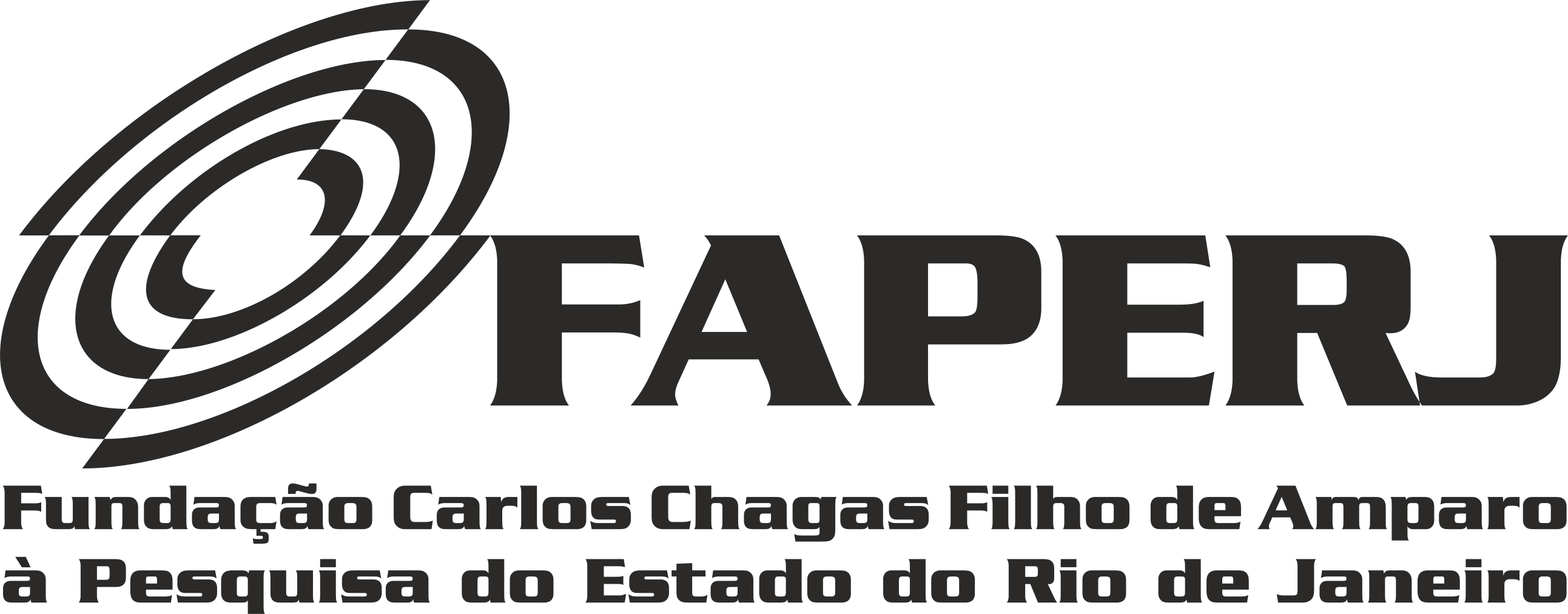Characterization of patterns of urban displacements in Fortaleza with the use of data from georeferenced social networks
DOI:
https://doi.org/10.14295/transportes.v28i5.2153Keywords:
Social network, Pattern of displacement, Socioeconomic characterization, Spatial regressionAbstract
Traditional techniques for obtaining data on mobility had suffered a delay process. In this scenario, alternative, low cost techniques capable of incorporating the dynamics of these displacement patterns have been attractive. These include databases from location-based social networks. Therefore, the main objective of this work was the elaboration of a method to characterize mobility patterns in Fortaleza using Twitter and Instagram data. The proposed method allowed the assignment of trips from the check-ins, identifying the OD pairs. In addition, a method of socioeconomic characterization of individuals through spatial regression was suggested. The results indicate that the method was effective in identifying displacement patterns of medium and high income people, mainly for leisure travel. However, one of the results constrains was the inability of representing the lower income population travel behaviour at the city of Fortaleza.Downloads
References
Abbasi, O., Alesheikh, A., Sharif, M. (2017) Ranking the city: the role of location-based social media check-ins in collective human mobility prediction. ISPRS International Journal of Geo-Information, v. 6, n. 5, p. 136. https://doi.org/10.3390/ijgi6050136
Alzahrani, S., M. (2018) Development of IoT mining machine for Twitter sentiment analysis: mining in the cloud and results on the mirror. In: 2018 15th Learning and Technology Conference (L&T). IEEE, 2018. p. 86-95.
Agryzkov, T., martí, T., Tortosa, L. (2017) Measuring urban activities using Foursquare data and network analysis: a case study of Murcia (Spain). International Journal of Geographical Information Science, v. 31, n. 1, p. 100-121. https://doi.org/10.1080/13658816.2016.1188931
Anselin, L. (1995) Local indicators of spatial association - LISA. Geographical analysis, 27, pp. 93-115.
Bifet, A., Frank, E. (2010) Sentiment knowledge discovery in twitter streaming data. In International conference on discovery science, pp. 1-15. Springer, Berlin, Heidelberg. https://doi.org/10.1007/978-3-642-16184-1_1
Capdevila, J., Cerquides, J., Nin, J., & Torres, J. (2017) Tweet-SCAN: An event discovery technique for geo-located tweets. Pattern Recognition Letters, v. 93, p. 58-68.
Cheng, Z., Caverlee, J., Lee, K., Sui, D. (2011) Exploring millions of footprints in location sharing services. ICWSM, pp. 81-88.
Cheng, Z., Jian, S., Maghrebi, M., Rashidi, T., Waller, S. (2018) Is Social Media an Appropriate Data Source to Improve Travel Demand Estimation Models? In: Transportation Research Board.
Cranshaw, j., Schwartz, R., Hong, J. I., Sadeh, N. (2012) The livehoods project: Utilizing social media to understand the dynamics of a city. Sixth International AAAI Conference on Weblogs and Social Media.
Ferreira, J. (2013) Mobi-System: towards an information system to support sustainable mobility with electric vehicle integration. Doctoral thesis. Minho's University (Portugal). http://hdl.handle.net/1822/28871
Gao, S., Jiue, Y., Bo, Y.,Yingjie, H., Krzysztof, J. (2014) Detecting origin-destination mobility flows from geotagged Tweets in greater Los Angeles area. In: Eighth International Conference on Geographic Information Science (GIScience'14).
Hanson, S., Huff, J. (1988) Systematic variability in repetitious travel. Transportation, 15(1-2), pp. 111-135. https://doi.org/10.1007/BF00167983
Hanson, S.,Huff, J. Assessing day-to-day variability in complex travel patterns. Transportation Research Record, 891, pp. 18-24, 1981.
Hasan, S., Zhan, X., Ukkusuri, S. (2013) Understanding urban human activity and mobility patterns using large-scale location-based data from online social media. In Proceedings of the 2nd ACM SIGKDD international workshop on urban computing. p. 6. DDOI: 10.1145/2505821.2505823
Hellinga, B. (1995) Estimating dynamic origin-destination demands from link and probe counts. Queen's University at Kingston.
Hu, W., Peter, J. (2017) An adaptive hawkes process formulation for estimating time-of-day zonal trip arrivals with location-based social networking check-in data. Transportation Research Part C: Emerging Technologies, v. 79, p. 136-155. https://doi.org/10.1016/j.trc.2017.02.002
IBGE. (2018) Pesquisa Nacional por Amostra de Domicílios Contínua. Diretoria de Pesquisas, Coordenação de Trabalho e Rendimento.
Iqbal, M. D. Shahadat, C., Charisma, F., Wang, P., Gonzalez, M. (2014) Development of origin–destination matrices using mobile phone call data. Transportation Research Part C: Emerging Technologies, v. 40, p. 63-74. http://hdl.handle.net/1721.1/108682
Lima, L. S. (2017) Espraiamento Urbano por Autossegregação e seus Impactos na Acessibilidade Urbana de Fortaleza. Tese de Doutorado. Dissertação. Universidade Federal do Ceará, Fortaleza - CE.
Molloy, J. Moeckel, R. (2017) Improving destination choice modeling using location-based big data. ISPRS International Journal of Geo-Information, v. 6, n. 9, p. 291.
Oliveira, S.F.C., Silva C. A. U., Silva, M. Y. O (2019). O uso do instagram e do twitter para identificação e mapeamento de usos do solo em áreas urbanas: o caso de Fortaleza-CE. Brazilian Journal of Development, v. 5, n. 9, p. 16128-16149. tps://doi.org/10.34117/bjdv5n9-172.
Pereira, R. H. (2013). Tempo de deslocamento casa-trabalho no Brasil (1992-2009): diferenças entre regiões metropolitanas, níveis de renda e sexo. Texto para Discussão, Instituto de Pesquisa Econômica Aplicada (IPEA).
Piza, M. (2012) O fenômeno Instagram: considerações sob a perspectiva tecnológica. Monografia (Graduação em Sociologia). Universidade de Brasília, Brasília.
Ramos, F. R. (2002) Análise espacial de estruturas intra-urbanas: o caso de São Paulo. São José dos Campos: INPE.
Wolf, J. Oliveira, M., Thompson, M. (2003) Impact of underreporting on mileage and travel time estimates: Results from global positioning system-enhanced household travel survey. Transportation Research Record: Journal of the Transportation Research Board, n.1854, p. 189-198. https://doi.org/10.3141/1854-21.
Downloads
Published
How to Cite
Issue
Section
License
Authors who submit papers for publication by TRANSPORTES agree to the following terms:
- Authors retain copyright and grant TRANSPORTES the right of first publication with the work simultaneously licensed under a Creative Commons Attribution License that allows others to share the work with an acknowledgement of the work's authorship and initial publication in this journal.
- Authors may enter into separate, additional contractual arrangements for the non-exclusive distribution of this journal's published version of the work (e.g., post it to an institutional repository or publish it in a book), with an acknowledgement of its initial publication in TRANSPORTES.
- Authors are allowed and encouraged to post their work online (e.g., in institutional repositories or on their website) after publication of the article. Authors are encouraged to use links to TRANSPORTES (e.g., DOIs or direct links) when posting the article online, as TRANSPORTES is freely available to all readers.
- Authors have secured all necessary clearances and written permissions to published the work and grant copyright under the terms of this agreement. Furthermore, the authors assume full responsibility for any copyright infringements related to the article, exonerating ANPET and TRANSPORTES of any responsibility regarding copyright infringement.
- Authors assume full responsibility for the contents of the article submitted for review, including all necessary clearances for divulgation of data and results, exonerating ANPET and TRANSPORTES of any responsibility regarding to this aspect.









